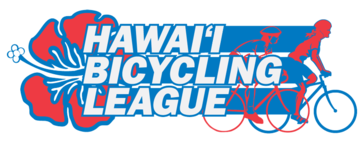- Bicycle Facilities -
Bicycles are allowed on all roadways unless explicitly prohibited. Dedicated bike facilities are created to provide separation between bicyclists and motor vehicles. Bikeways such as paths and separated bike lanes allow bicyclists to ride without merging with motor vehicles. Separation allows for a wide variety of people with varying skills, purposes, and speeds to use a bicycle.
Overall tips:
» Say “Passing on your left” or “On your left” to alert other users you’re passing—and only pass on the left. Give a clear signal when passing either by using a bell or your voice. Warn far enough in advance that you have time to maneuver if necessary.
Remember to: » BE PATIENT » RIDE AT A SAFE SPEED » FOLLOW STANDARD RULES » TAKE CARE AT INTERSECTIONS » WATCH FOR CAR DOORS, DEBRIS, AND PEDESTRIANS MID-BLOCK
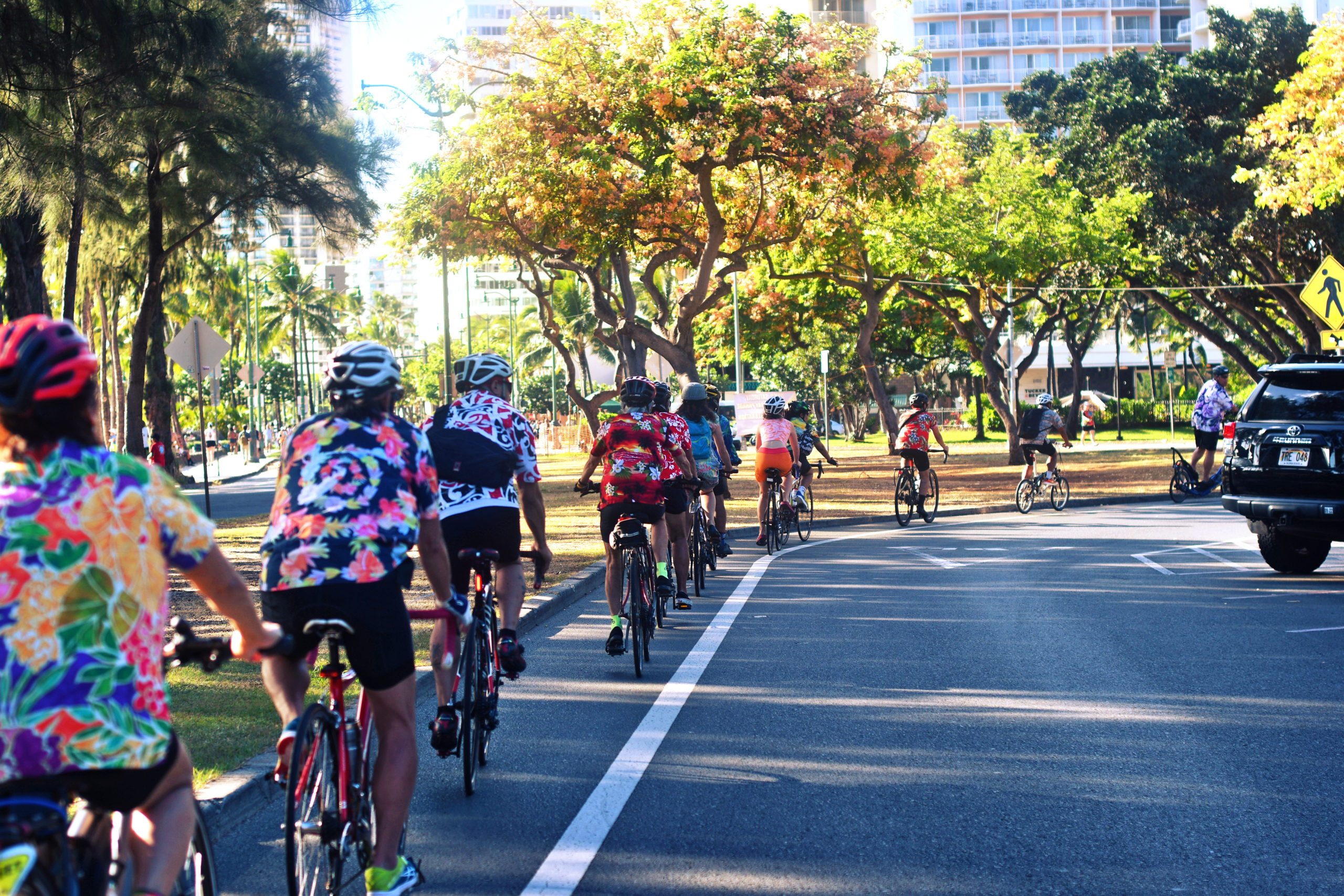
Bike Lanes
(Conventional) Bike Lane Examples:
Bike Lanes:
Bike lanes are separated by a white line with bicycle markings and bike lane signs. These lanes allow bicyclists to ride at their preferred speed without keeping up with motor traffic. It encourages predictable behavior and movements between bicyclists and motorists on the road.
What to Know:
» If there is a safe bike lane going in the same direction you’re bicycling, by Hawai‘i law you should use it. This is the case UNLESS:
» You are making a turn
» You are going the speed of traffic (at the time)
» You deem the bike lane unsafe (hazardous condition, obstacle, parked car, etc.)
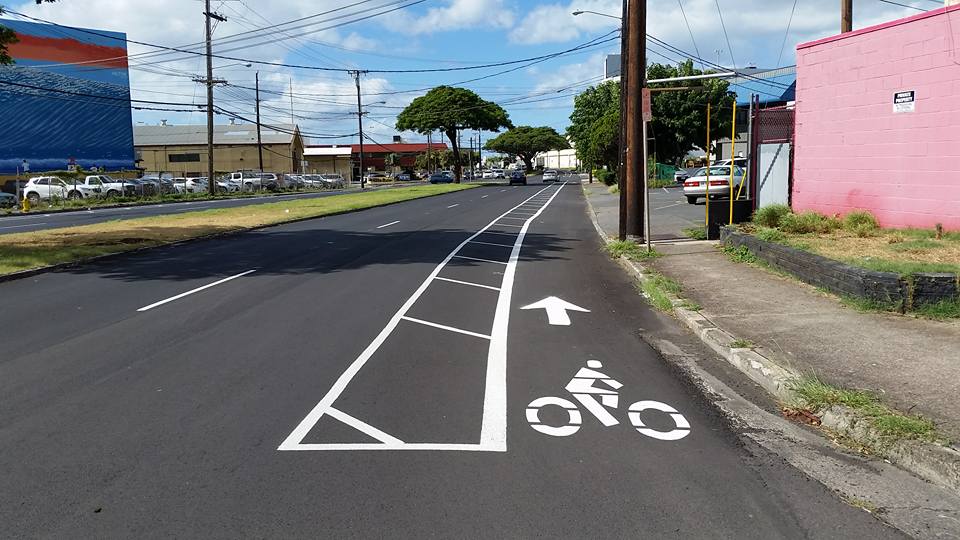
Buffered Bike Lanes
Buffered Bike Lane Examples:
Buffered Bike Lanes:
Buffered bike lanes are bike lanes with buffered striped areas that give bicyclists more space away from the adjacent travel/parking lane. This gives bicyclists more breathing room away from motor traffic.
What to Know:
» When wet, striping and paint on the road get really slippery. Slow your speed down & try to avoid braking on the paint.
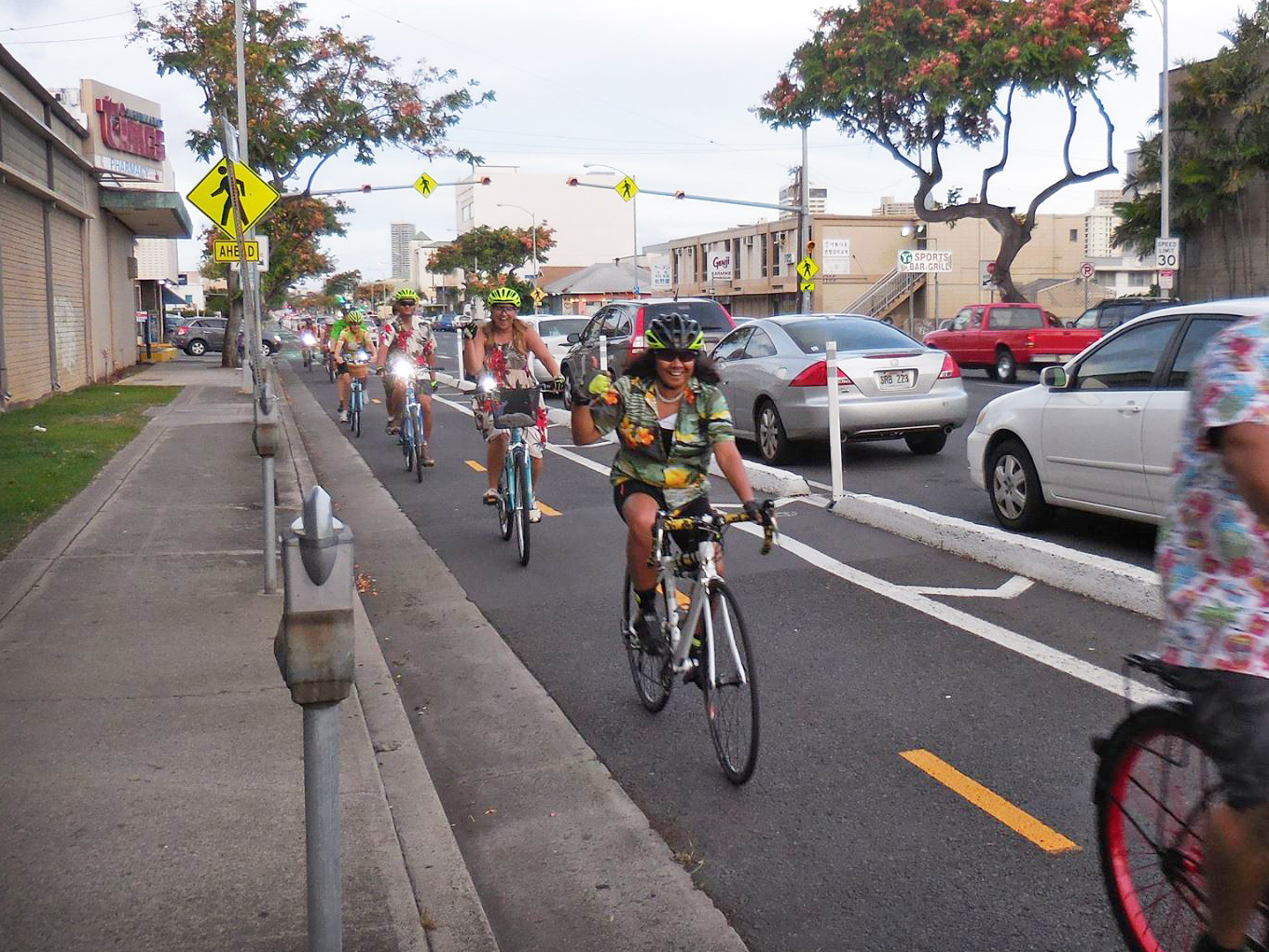
Protected Bike Lanes
Protected Bike Lane Examples:
Protected/Separated Bike Lane:
Protected bike lanes (PBLs) are bike lanes that are physically separated from traffic. The physical separation can be created by a variety of objects including on-street parking, curbs, planters, and/or plastic delineators. Protected bike lanes can be on the left or right side of the road and can be one-way or two-way direction of travel.
What to Know:
» Pay attention to the green paint in the PBL. This is your reminder to look both ways for cars before you get to the paint.
» By law, motorists must yield to bicyclists & pedestrians. Bicyclists must also yield to pedestrians.
» Most of O‘ahu’s PBLs are 2-directional for bicycle travel, with centerline stripes to demarcate opposing lanes of travel & guiding arrows pointing in the direction you should be biking in.
» PBLs are for bicycles. Skateboards, scooters, mopeds, and other motorized vehicles are prohibited from using (or parking in) the protected bike lane.
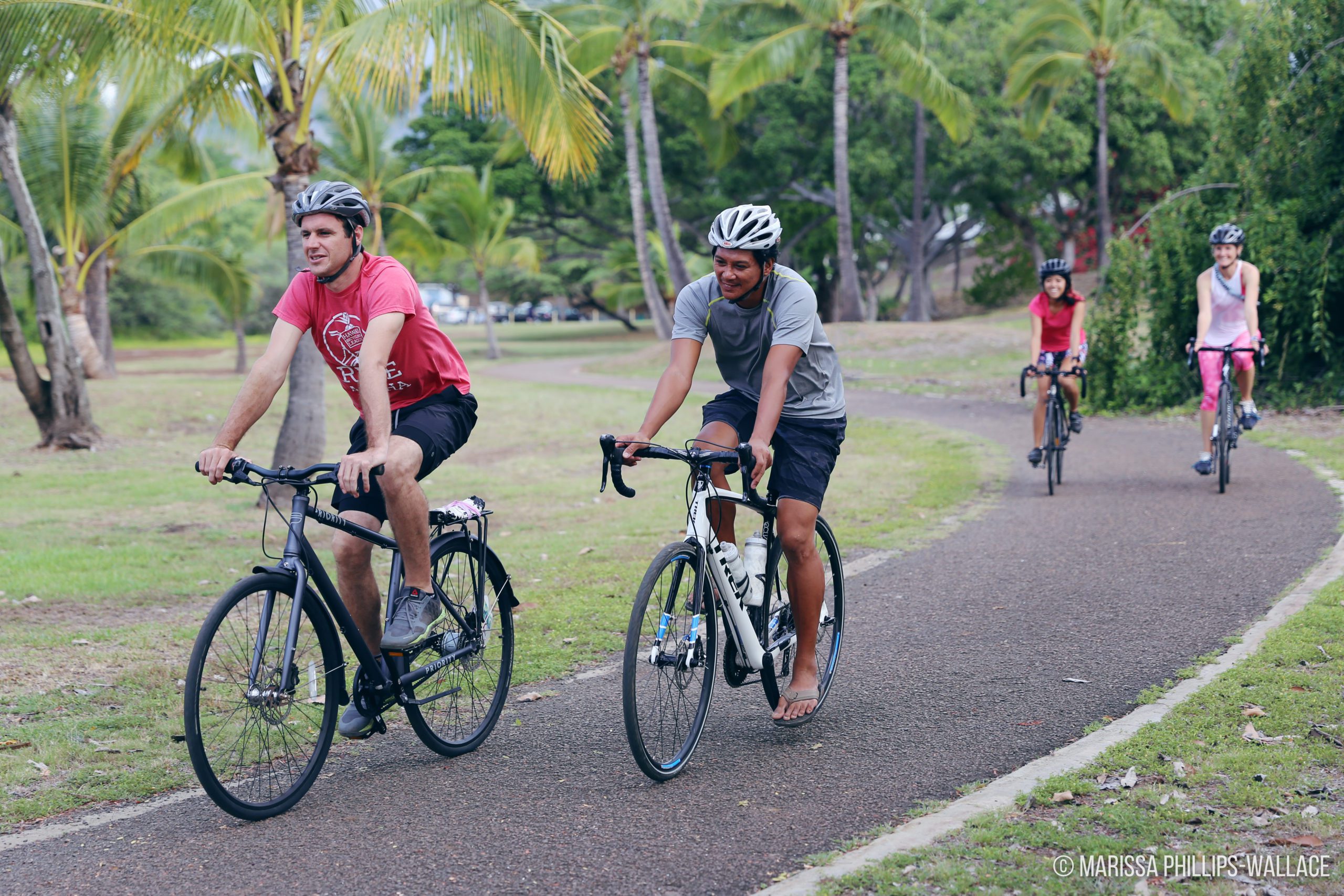
Bike Path
Bike Path Examples:
Shared/Multi-Use/Bike Path:
Shared/Multi-Use paths are separated paths/trails that serve people bicycling, walking, and other nonmotorized users. Remember to yield to pedestrians and share the path as you would the road!
What to Know:
» Be courteous to everyone and yield to all other trail users. Bike paths are not made for speed.
» If you’re riding with others, do not use more than half the width of the trail. Depending on the size of the trail, this may mean that you have to ride single file.
» If you have trash, carry it until you find a trash can. Keep our ‘āina clean!
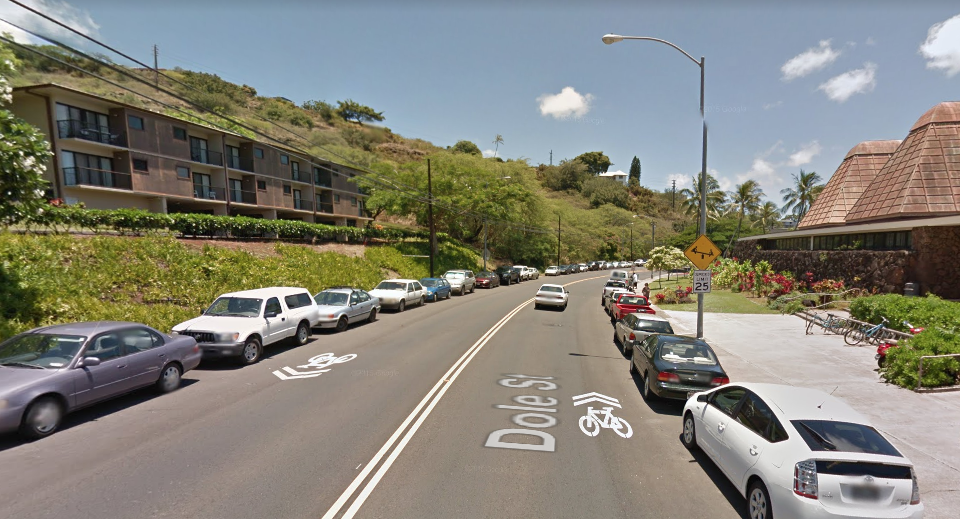
Shared Lane Markings (Sharrows)
Sharrow Examples:
Bike Sharrow/Shared Lane Markings:
A bike sharrow is a positioning device for bicyclists riding on the road. It is meant to guide bicyclists on where to be on the road and help foster the idea of a shared space with motorists on the road. It also reminds motorists to be cautious and considerate as there is a higher likelihood of bicyclists being on the road.
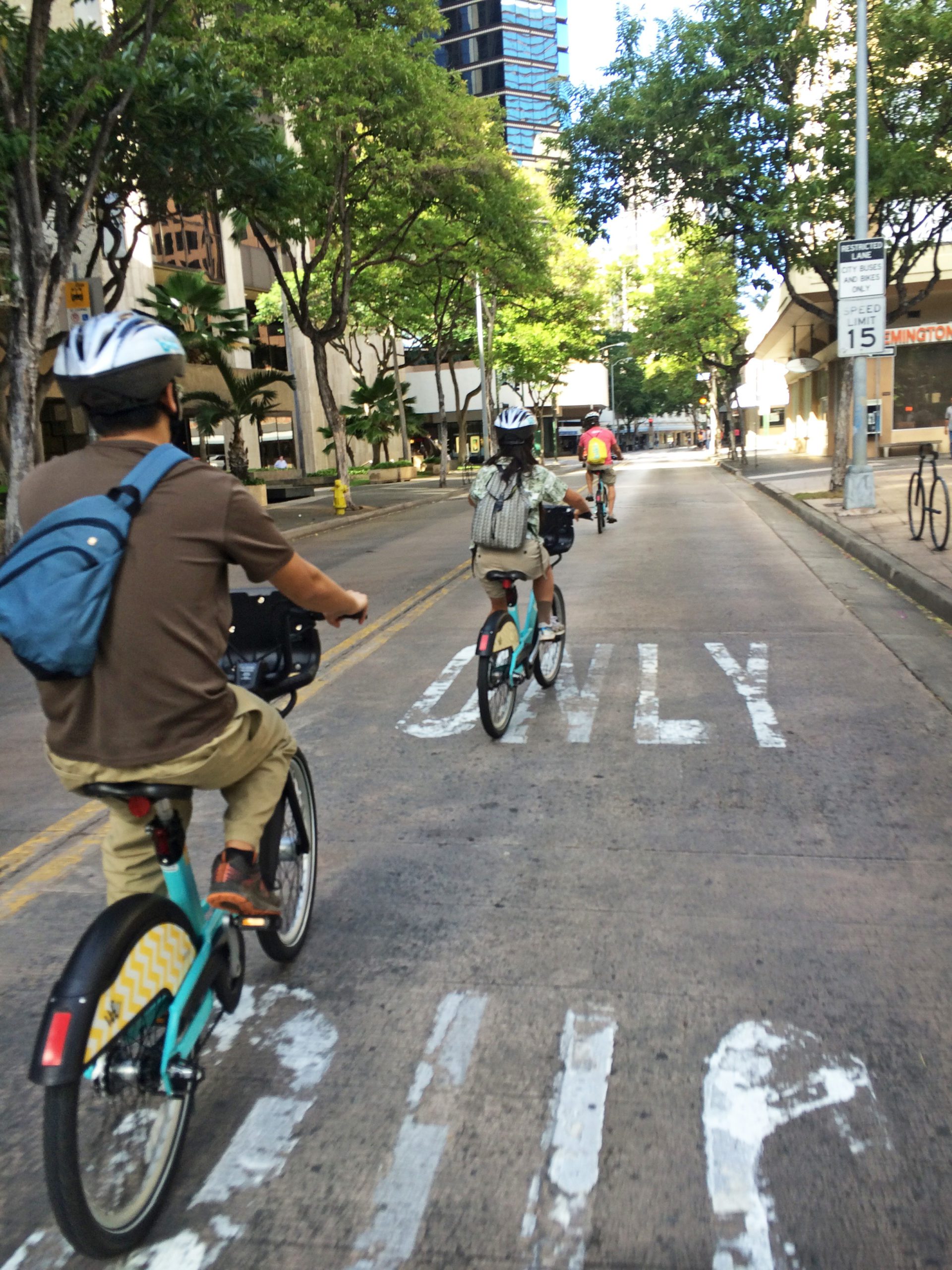
Signed (Bike) Routes:
Signed Routes Example:
Signed/Bike Route (No pavement markings, signage only):
“Bike Route” signage helps guide bicyclists along a designated bicycle route, direction changes, and wayfinding.
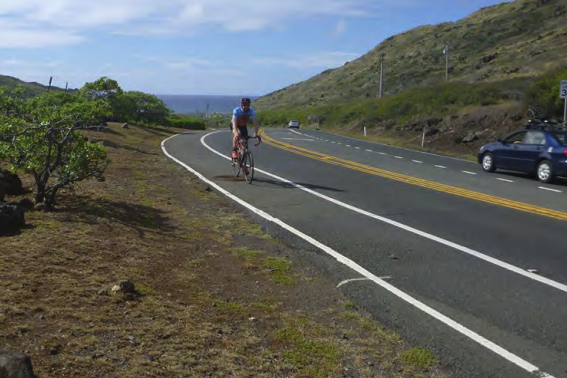
Shoulder Bikeways
Shoulder Bikeway Examples:
Shoulder Bikeways:
Shoulder Bikeways are typically reserved for rural road cross-sections. Paved shoulders provide a range of benefits: they reduce motor vehicle crashes; reduce long-term roadway maintenance; ease short-term maintenance, such as
debris clearing; and provide space for bicyclists and pedestrians (although paved shoulders typically do not meet accessibility requirements for pedestrians).
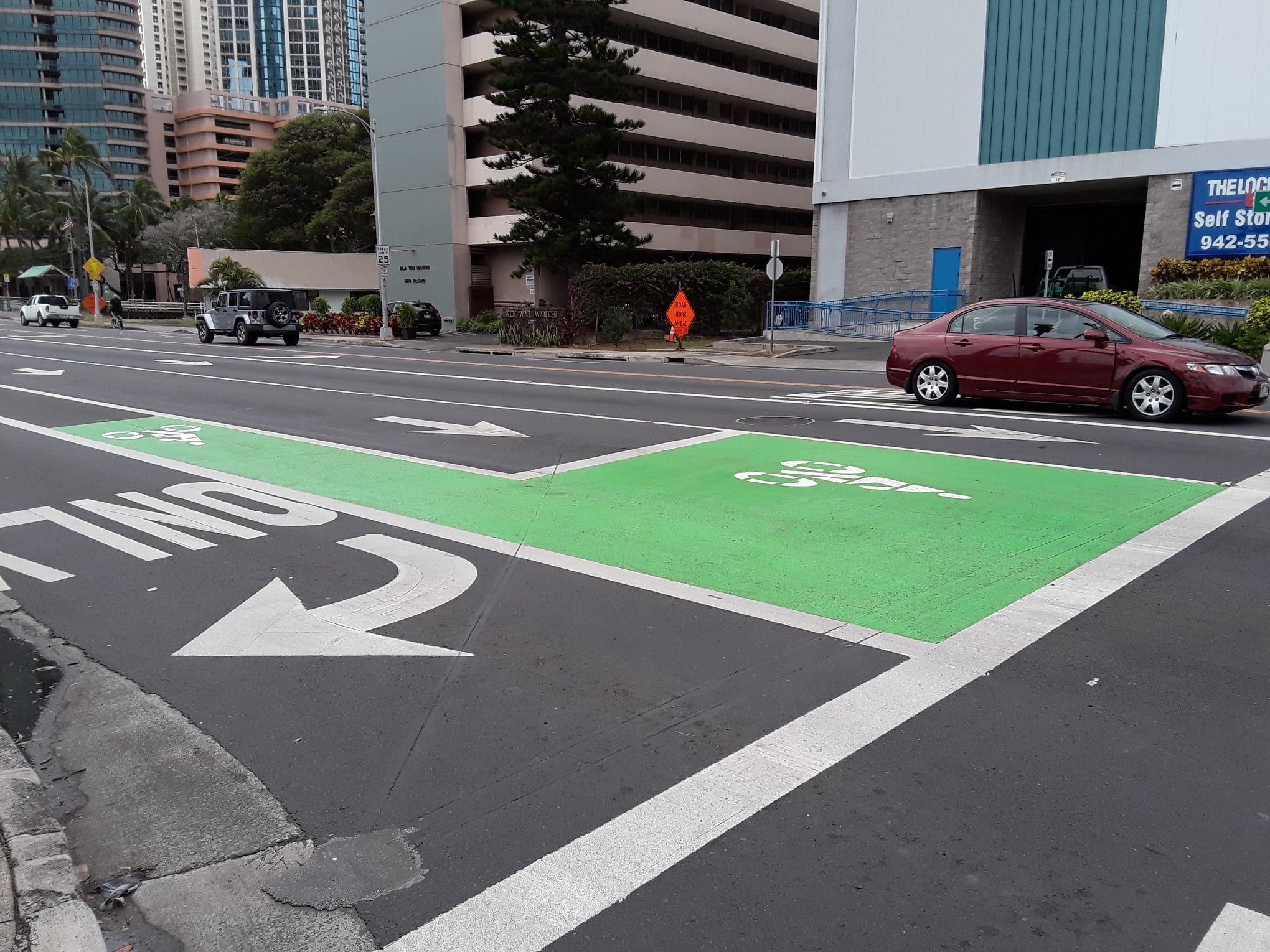
Bike Boxes
Bike Box Examples:
Bike Box:
A bike box is an area at a signalized intersection in front of the stop bar for bicyclists to maneuver themselves to the front of the lane when traffic is paused during a red light, in order to make a safe turn and be easily seen by motorists. REMEMBER: bicyclists must still follow traffic laws and signals when using a bike box. Only use a bike box when you approach an intersection at a red light; make sure the driver of a motor vehicle sees you and is at a complete stop before maneuvering.
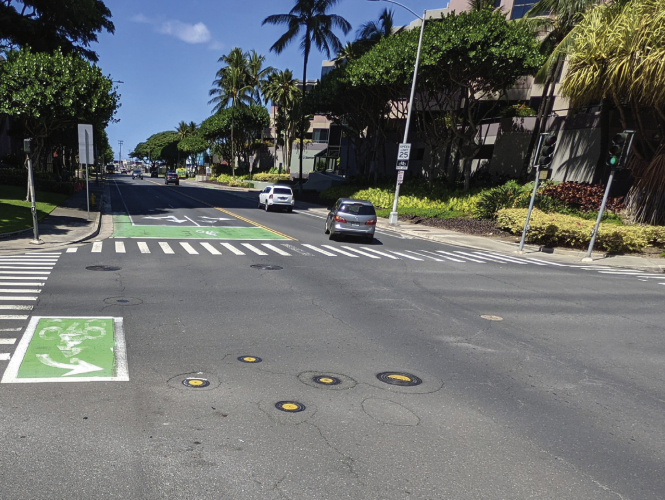
Two-stage Turn Queue Box
Two-Stage Turn Queue Box Example:
Two-Stage Turn Box:
A two-stage turn box should be considered where bike lanes continue to an intersection and a protected intersection is not provided. The two-stage turn queue box designates a space for bicyclists to wait while performing a two-stage turn across a street at a location outside the path of traffic. These are particularly useful to facilitate bicycle left-turns.
More definitions:
An on-street bicycle parking facility consisting of multiple bicycle racks that form a cohesive bicycle parking area.
§ 15-2.31 Bicycle corral.
A general term including bicycle lanes or bicycle paths.
§ 15-2.5 Bikeway.
Buffered bike lanes are created by painting a flush buffer zone between a bike lane and the adjacent travel lane. While buffers are typically used between bike lanes and motor vehicle travel lanes to increase bicyclists’ comfort, they may also be provided between bike lanes and parking lanes to discourage bicyclists from riding too close to parked vehicles.
4.1.3 BIKEWAY SYSTEM
A lane of a laned roadway, designated by the director of transportation services as being restricted exclusively for city transit buses, official city vehicles on authorized missions on or adjacent to the city transit bus lane, authorized tow vehicles, and bicycles.
15-2.23 Streets and related terms.
A median bikeway is a protected bike lane in the center median of a roadway. This design provides a dedicated space for bicyclists, reducing conflicts with vehicles, pedestrians, and bus traffic.
[link]
15-2.32 Parklet.
Shared use paths are two-way facilities that are physically separated from motor vehicle traffic and used by bicyclists, pedestrians, and other non-motorized users. Shared use paths are often located in an independent alignment, such as a greenbelt or abandoned railroad right-of-way, and are used for recreation, leisure, and commuting.
4.1.3 BIKEWAY SYSTEM
A shoulder bikeway is typically reserved for rural road cross-sections. Paved shoulders provide a range of benefits: they reduce motor vehicle crashes; reduce long-term roadway maintenance; ease short-term maintenance, such as debris clearing; and provide space for bicyclists and pedestrians.
4.1.3 BIKEWAY SYSTEM
Helpful Resources:
» Downloadable/Online O‘ahu Bike Map
» HBL’s Commuter Mentor Program – Complete the Bike Buddy form here to get help mapping out a stress-free route that fits your biking experience and comfort level riding in Hawai‘i.
» O‘ahu Bike Guide 2022 (6th Edition) – Provided by the City & County of Honolulu, Department of Transportation Services
» For more detailed information on these facility types, as well as additional design considerations for intersections, crossings, and traffic calming measures, please see the Honolulu Bicycle Facility Design Toolkit.
» O‘ahu Bike Plan – 2019 Update – This O‘ahu Bike Plan Update, completed in December 2019, will guide the continued growth of bicycling as a safe, convenient, accessible, affordable, healthy, and fun transportation option. The focus of this 2019 O‘ahu Bike Plan Update is to identify specific projects, policies, and programs that will expand bicycle ridership and provide a network of safe, low-stress bikeways attractive to users of all ages and abilities.
